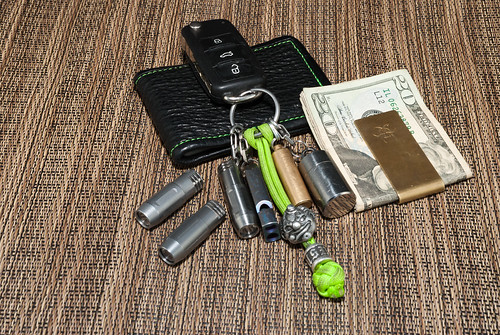Got my light today.
Verdict: Severaly diappointed, light basically unusable.
Seriously. Yes, it is tiny and all. And thats all of it. The most important part is working less than shitty.
And with that I mean the actual function of the light, i.e. making light. There are like 20 turns of thread between head and body, most of them do nothing. Between onset of light and full power is maybe one rotation. Getting the light brighter than 10 lumens is difficult even when using both hands. When I finally got it tight enough to be relatively bright, it dented the bottom of the battery (which cannot be healthy).
The power ramping is EXTREMELY fragile, brightness jumps all over the place even when slowly rotating the barrel. After the first time getting it to maybe 30 lumens, the bottom of the cell was dented enough that the edges actually bypassed the QTC, making it a pretty bright direct drive light. Only that I needed a screwdriver jammed into the keyring port to get enough torque on it to be able to switch off again.
Tried the whole thing with the second battery I ordered, same game: Lots of force and dented bottom before I got it significantly higher than a quark mini on low. Without acutal force it went maybe to 5-10 lumen, and even getting there was no smooth sailing.
One handed operation is impossible.
I seriously consider right now to rip that stupid QTC out and replace it by a resistor to make an actually useable direct drive light with reasonable runtime.
It's always disappointing to read a post like this, your first approach should always be to the retailer you purchased the light from. Obviously you've read other positive reviews in this thread, having read those reviews the first thing I'd think is "my light is faulty" I'd then contact the retailer and give them a chance to make it right before posting a rant on a public forum.
Norm














